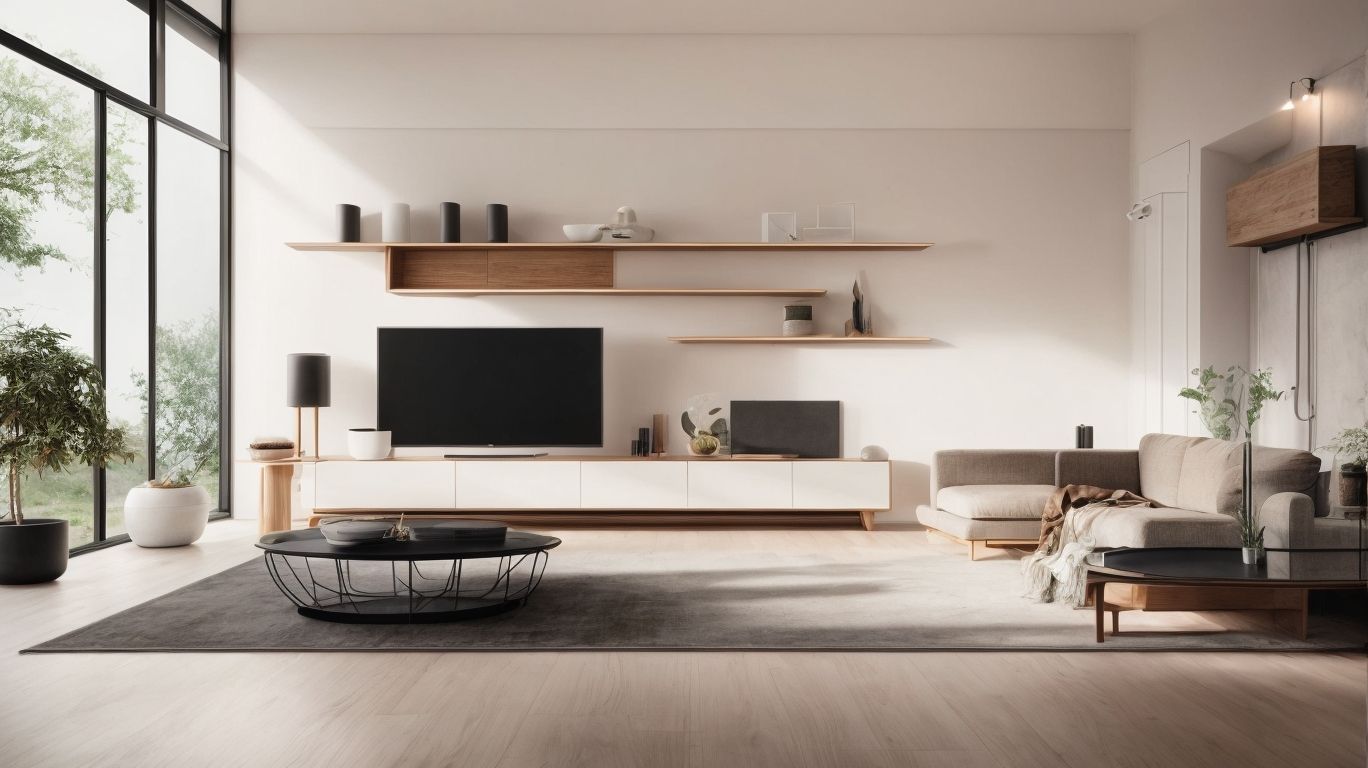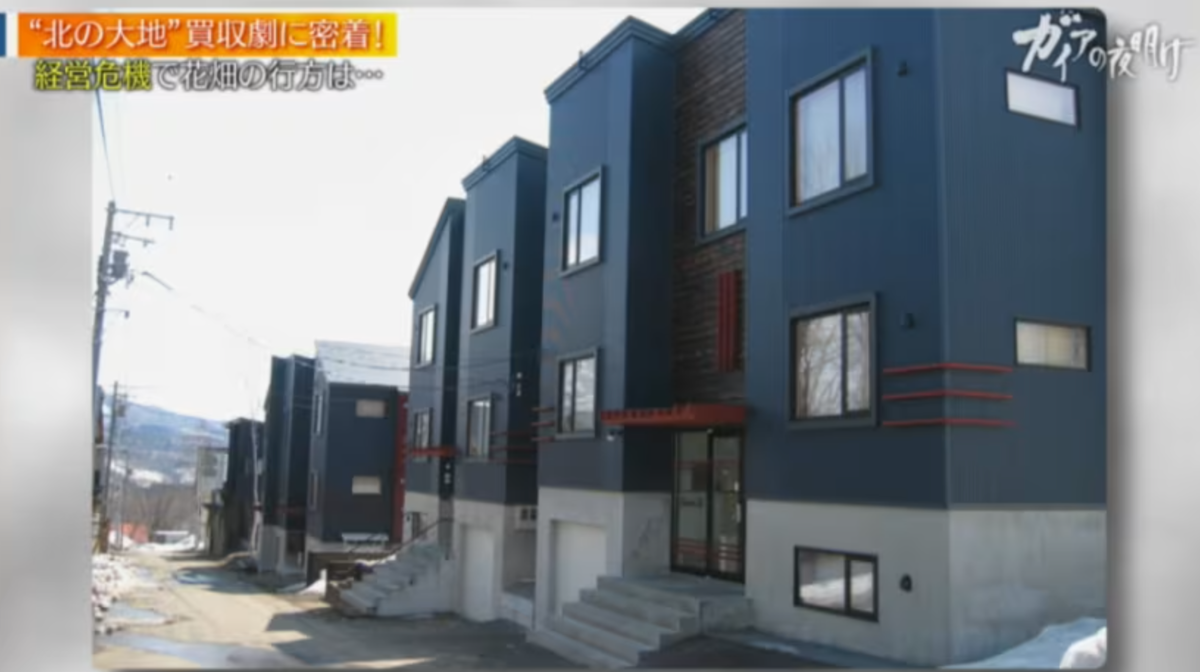
As technology continues to advance, more and more people are turning towards smart home design to incorporate convenience and efficiency into their daily lives. However, navigating the world of smart home design can be overwhelming and confusing. This guide will provide you with the essential information you need to create a smart home that meets your needs and suits your lifestyle. With so many options available, it’s crucial to have a solid understanding of the key elements to create a truly functional and intelligent home. Are you ready to revolutionize your living space with the power of technology?
What Is Smart Home Design?
Smart home design is the integration of technology and automation into a home to improve convenience, comfort, and efficiency. This involves connecting various devices, such as lights, thermostats, security systems, and appliances, to a central control system. With the use of smartphones or voice assistants, homeowners can remotely manage and monitor their home.
Smart home design includes features such as:
- energy management
- security
- entertainment
- convenience
As technology continues to advance, smart home design is gaining popularity due to its benefits, including energy savings, enhanced security, and improved lifestyle. When designing a smart home, it is important to prioritize compatibility and scalability for seamless integration and future-proofing.
Why Is Smart Home Design Important?
Smart home design is essential for multiple reasons. Firstly, it significantly improves convenience and efficiency by automating various tasks, such as controlling lighting, temperature, and security systems. Secondly, it enhances energy efficiency by optimizing the use of resources and reducing waste. Additionally, smart home design increases safety and security through features like remote monitoring and surveillance. Finally, it adds value to your home and makes it more appealing to potential buyers.
Pro-tip: When designing a smart home, it is crucial to consider the compatibility of different devices to ensure smooth integration and functionality.
How to Start Designing a Smart Home?
Designing a smart home can seem like a daunting task, but with the right approach, it can be a fun and rewarding experience. In this section, we will guide you through the initial steps of smart home design. From setting a budget to choosing a smart home hub, we will help you lay the foundation for your project. We will also discuss the importance of identifying your needs and wants, as well as considering the layout of your home. Let’s get started on creating your dream smart home!
1. Determine Your Budget
Determining your budget is an essential step in the process of designing a smart home. To help you determine your budget, here is a list of steps:
- Evaluate your financial situation and set a realistic budget for your smart home project.
- Research the average costs of smart home devices and services that align with your needs and wants.
- Consider additional expenses such as installation, maintenance, and future upgrades.
- Prioritize your smart home goals and allocate funds accordingly.
- Explore financing options or DIY alternatives to stay within your budget.
2. Choose a Smart Home Hub
When selecting a smart home hub, it’s important to consider compatibility, features, and ease of use. To help you make the best decision, follow these steps:
- Research the various smart home hub options available on the market.
- Read reviews to gain insight into the pros and cons of each hub.
- Take into account the devices you already have or plan to incorporate into your smart home system.
- Check for compatibility with popular voice assistants like Amazon Alexa or Google Assistant.
- Evaluate the features offered by each hub, such as remote access, automation capabilities, and integration with other smart devices.
- Compare the user interface and ease of setup to choose a hub that fits your technical skills.
Remember, choosing the right smart home hub is essential for a smooth and efficient smart home experience. Consider your needs and preferences to make an educated decision.
3. Identify Your Needs and Wants
Identifying your needs and wants is a crucial step in designing a smart home. Here are the steps to guide you through this process:
- Assess your lifestyle and daily routines to determine which functionalities would best suit your needs and make your life easier.
- Consider your priorities, such as energy efficiency, convenience, security, or entertainment.
- Create a list of specific features and technologies you desire, such as voice control, remote access, or smart appliances.
- Research and explore the various smart home devices available in the market to understand their capabilities and compatibility with your needs.
- Consult with professionals or experts in smart home technology to gain insights and recommendations based on your requirements.
John and Sarah desired a smart home that would simplify their busy lives. They identified their needs and wants, including automated lighting, a smart thermostat, and voice-controlled entertainment systems. With careful planning, they successfully integrated these features into their existing home, creating a convenient and comfortable living environment. Now, they can effortlessly control their home’s functions, saving time and energy in their daily routines.
4. Consider the Layout of Your Home
Considering the layout of your home is crucial when designing a smart home. Here are important steps to follow:
- Assess your home’s current layout and electrical system.
- Identify areas where you want to incorporate smart technology.
- Consider the placement of smart devices for optimal functionality and accessibility.
- Ensure compatibility between devices and layout constraints.
- Plan the wiring and installation process, keeping aesthetics in mind.
When my friend, Sarah, decided to design a smart home, she carefully considered the layout of her home. She strategically placed smart speakers in common areas and installed smart lighting to enhance the ambiance. By considering the layout, Sarah was able to seamlessly incorporate smart technology into her home, creating a convenient and efficient living space.
What Are the Key Features of a Smart Home?
When it comes to designing a smart home, there are several key features that can greatly enhance the functionality and convenience of your living space. In this section, we will take a closer look at these features and how they can transform your home into a modern, connected living space. From voice control to energy efficiency, remote access to security and surveillance, we will explore the different elements that make up a smart home and how they can make your life easier and more efficient.
1. Voice Control
Voice control is a key feature in smart home design that allows users to control various devices and systems using voice commands. To incorporate voice control into your smart home, follow these steps:
- Choose a voice assistant platform such as Amazon Alexa or Google Assistant.
- Select compatible smart devices that support voice control, such as smart speakers, thermostats, and lighting systems.
- Set up the voice assistant by following the manufacturer’s instructions.
- Connect the smart devices to the voice assistant platform using the respective mobile apps or voice commands.
- Create voice commands for controlling each device, such as “turn on the lights” or “set the thermostat to 72 degrees.”
- Test the voice control functionality and make adjustments as needed.
By incorporating voice control into your smart home, you can enjoy a hands-free and convenient way to interact with your home devices.
2. Remote Access
Remote access is a crucial aspect of smart home design, allowing homeowners to control and monitor their home remotely. Here are the steps to incorporate remote access into your smart home design:
- Choose a smart home hub with remote access capabilities, such as Amazon Echo or Google Home.
- Set up your smart home devices, ensuring they are compatible with the chosen hub and have remote access capabilities.
- Connect the devices to your home’s Wi-Fi network for remote access.
- Download the corresponding mobile app for the hub and devices.
- Create user accounts and link the devices to the app.
- Configure the settings and permissions for remote access.
- Test the remote access functionality by controlling the devices through the mobile app from outside the home.
- Ensure a secure connection by using strong passwords and encryption.
- Regularly update the firmware and software of the hub and devices for enhanced security and new features.
3. Energy Efficiency
When designing a smart home, incorporating energy efficiency is crucial to reduce environmental impact and save on energy costs. Here are some steps to achieve energy efficiency:
- Install smart thermostats to regulate temperature and optimize energy usage.
- Use smart lighting systems with motion sensors and timers to reduce unnecessary energy consumption.
- Implement smart power strips that automatically turn off electronics when not in use and contribute to energy efficiency.
- Utilize smart appliances that are energy-efficient and have smart features to monitor and adjust energy usage, promoting energy efficiency.
- Integrate renewable energy sources like solar panels to generate clean energy for your home, further enhancing energy efficiency.
By following these steps, you can significantly reduce energy consumption and contribute to a more sustainable and cost-effective smart home.
4. Security and Surveillance
Incorporating security and surveillance into your smart home design is crucial for the safety of your family and property. Here are some steps to consider:
- Assess your security needs: Determine the level of security you require, such as door/window sensors, motion detectors, or video surveillance.
- Choose a reliable security system: Research and select a reputable security system with features like real-time alerts, smartphone integration, and professional monitoring.
- Install security cameras strategically: Identify areas that require surveillance, such as entrances, yard, or driveway, and position cameras accordingly.
- Integrate smart locks and access control: Enhance security by using smart locks with features like keyless entry, remote access, and temporary access codes.
Throughout history, advancements in security and surveillance technology have greatly improved home safety. Today, smart home systems offer seamless integration and convenience, providing peace of mind for homeowners.
What Are the Different Types of Smart Home Devices?
As technology continues to advance, more and more devices are becoming “smart” and capable of being controlled and monitored from a central hub. In this section, we will discuss the different types of smart home devices that can enhance the functionality and convenience of your home. From smart thermostats that can adjust the temperature based on your preferences, to smart appliances that can be controlled remotely, we will explore the various options available for creating a smart home.
1. Smart Thermostats
Smart thermostats are an essential element of smart home design, providing both convenience and energy savings. To incorporate smart thermostats into your home, follow these steps:
- Research: Familiarize yourself with various smart thermostat brands and their features, such as Nest or Ecobee.
- Compatibility: Verify if your current HVAC system is compatible with smart thermostats.
- Installation: Follow the manufacturer’s instructions to install the smart thermostat or hire a professional.
- Connectivity: Connect the thermostat to your home’s Wi-Fi network for remote access.
- Programming: Set up schedules and temperature preferences to optimize energy usage.
- Integration: Seamlessly integrate the smart thermostat with other smart devices in your home.
In 2011, Nest Labs introduced the first smart thermostat, revolutionizing home energy management. Today, smart thermostats are widely adopted, helping homeowners save up to 10-15% on heating and cooling costs.
2. Smart Lighting
Smart lighting is an essential component of a smart home design, providing convenience, energy efficiency, and customization options. To incorporate smart lighting into your home, follow these steps:
- Research: Learn about different smart lighting systems and their features.
- Assess your needs: Determine the areas in your home where you want to install smart lighting, including the 2. Smart Lighting.
- Choose the right bulbs: Select smart bulbs that fit your lighting preferences, such as color-changing or dimmable options.
- Select a control method: Decide whether you want to control your smart lighting through a hub, smartphone app, voice commands, or motion sensors.
- Installation: Follow the manufacturer’s instructions to install the smart lighting system in your home.
- Set up automation: Customize schedules, scenes, and routines to automate your smart lighting for energy efficiency and convenience.
- Enjoy the benefits: Experience the convenience of controlling your lights with voice commands, adjusting brightness levels, and creating ambiance with different lighting colors.
3. Smart Locks
Smart locks are an essential component of a smart home security system. Here are some steps to consider when incorporating smart locks into your home design:
- Research different options for smart locks available in the market.
- Determine the type of smart lock that best suits your needs, whether it’s a keypad, fingerprint, or Bluetooth-enabled lock.
- Consider compatibility with your existing door and lock mechanism.
- Install the smart lock according to the manufacturer’s instructions or seek professional installation if needed.
- Connect the smart lock to your home automation hub or mobile app for remote access and control.
- Test the functionality of the smart lock to ensure it is working properly and integrate it into your overall smart home system.
4. Smart Appliances
Smart appliances are an essential aspect of a well-designed smart home. These advanced appliances are equipped with technology and connectivity that allows them to be controlled remotely through a smartphone or smart home hub. Popular examples of smart appliances include refrigerators, ovens, washing machines, and dishwashers. These appliances offer various features, including energy efficiency, remote monitoring, and personalized settings. By incorporating smart appliances, homeowners can not only save time, energy, and money, but also enjoy the convenience and efficiency they provide.
How Can You Incorporate Smart Home Design into Your Existing Home?
To incorporate smart home design into your existing home, follow these steps:
- Assess your needs and goals for smart home technology.
- Research and choose the right smart home devices and systems for your home.
- Create a smart home network by connecting devices to a central hub.
- Install and set up your chosen smart home devices, such as smart thermostats, lighting, security systems, and voice assistants.
- Integrate your devices and systems to work together through automation and smart routines.
- Test and troubleshoot your smart home setup to ensure everything is working properly.
Remember to consider compatibility, security, and ease of use when incorporating smart home design into your existing home. With proper planning and implementation, you can enjoy the convenience and efficiency of a smart home in your current space.
What Are Some Common Mistakes to Avoid in Smart Home Design?
When creating a smart home, it is crucial to avoid common mistakes to ensure a smooth and effective system. Some common mistakes to avoid in smart home design include:
- Failing to plan for future advancements in technology.
- Overcomplicating the system with excessive automation.
- Neglecting to prioritize cybersecurity and data privacy.
- Poor placement of devices leading to signal interference or limited coverage.
- Not considering the compatibility of devices from different manufacturers.
- Ignoring energy efficiency measures.
By avoiding these mistakes, homeowners can design a smart home that is not only functional and secure, but also adaptable to future needs.
Frequently Asked Questions
What is a smart home?
A smart home is a home that utilizes advanced technology to automate and control various features and systems, such as lighting, security, temperature, and appliances.
Why should I consider smart home design?
Smart home design can greatly enhance your daily life by increasing convenience, energy efficiency, and security. It can also add value to your home and make it more attractive to potential buyers.
What are some key features to consider when designing a smart home?
Some important features to consider include a central control system, compatibility with different devices and platforms, remote access, and integration with voice assistants.
How can I get started with smart home design?
The first step is to research and familiarize yourself with the various smart home technologies and options available. Then, assess your specific needs and budget to determine which features are most important to you.
Do I need to hire a professional for smart home design?
While hiring a professional can be helpful, it is not necessary for all aspects of smart home design. Many smart home systems and devices are designed for easy installation and can be set up by the homeowner. However, for more complex systems or integrations, a professional may be beneficial.
Are there any privacy concerns with smart home design?
As with any technology, there are privacy concerns to consider with smart home design. It is important to research and choose reputable brands and systems with strong security measures in place. Additionally, be mindful of the data collected by your smart home devices and the sharing of this data with third parties.








